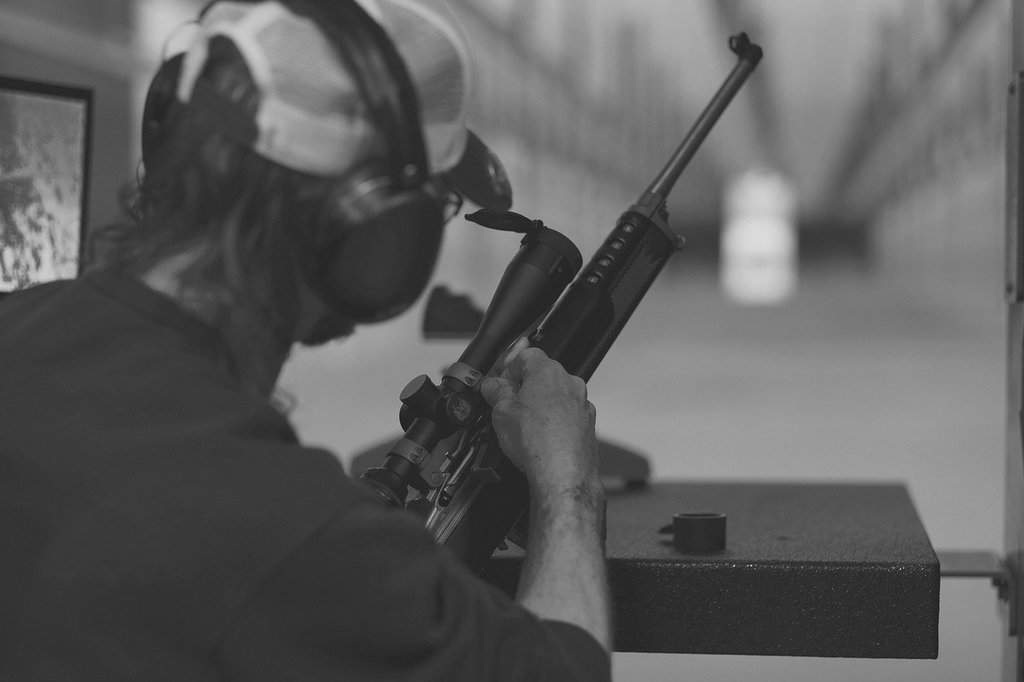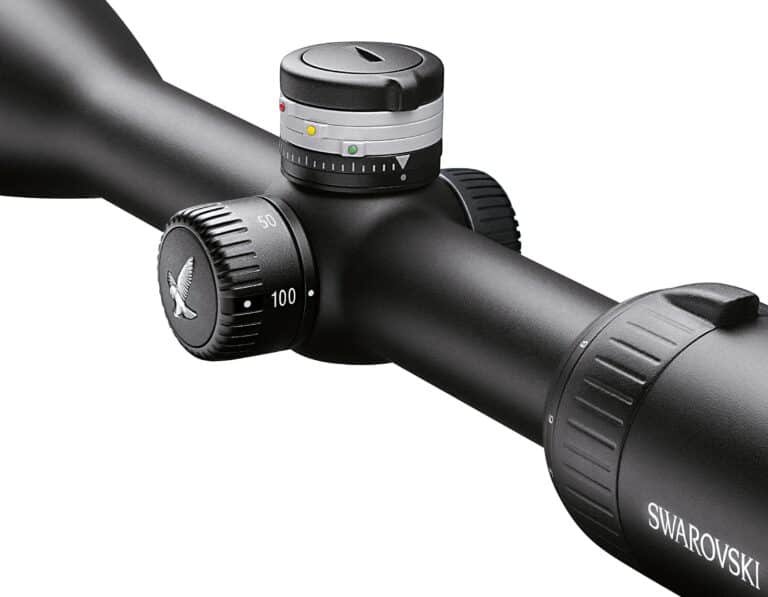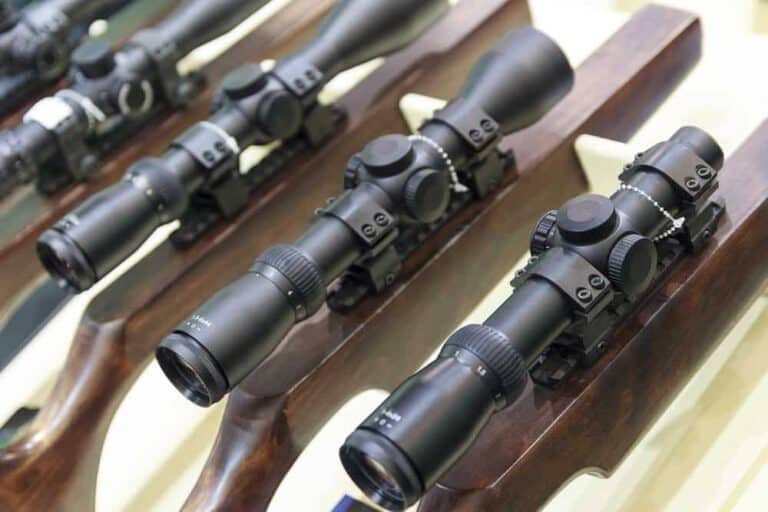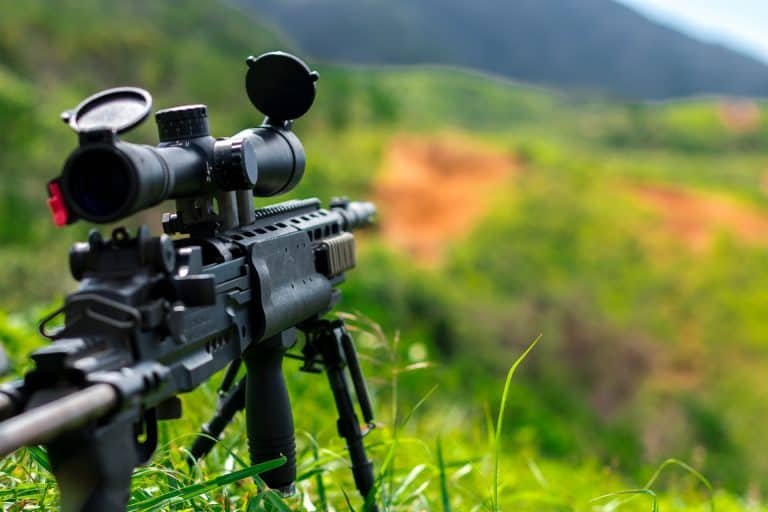How to Mount a Rifle Scope on a Picatinny Rail
Adding a scope to your rifle is a great way to improve its accuracy. Having the appropriate scope mount ensures that you have the best optics to hit your target. The process of mounting a scope on a Picatinny rail can be tricky, so this article serves the purpose of simplifying it.
Mounting your rifle scope on a Picatinny rail is a handy skill that you may have to use often should your gun have a Picatinny rail system. After reading this article, you should have the skills necessary to mount a scope on your Picatinny rail whenever you need to do so.
What You Need to Mount the Scope onto the Picatinny Rail
Before you start the process of mounting the scope onto the rail, there are some things you are going to need. The equipment that you need before you mount the scope to your Picatinny rail is:
- A Rifle with a Picatinny Rail. Many rifles come already equipped with a Picatinny rail mounted to them. This is because the rail is lightweight and also makes the process of mounting a scope to the rifle much more straightforward than without it.
- A Scope. In order to mount the scope to the rail, you have to have a scope, to begin with. The type of scope that you choose to mount to your rifle is entirely up to you as the rail is compatible with most scopes. We have some guides on choosing the best scope for your needs below:
These are the only two pieces of equipment you need in order to mount a scope to your Picatinny rail. The process is not very complicated; however, it can prove to be difficult for a beginner or someone who has never had to complete the process before.
The Process of Mounting the Scope to the Picatinny Rail
It is crucial that you follow these steps correctly in order to mount the scope to the rail. Should you fail to correctly do any of these steps, it could result in an improper mounting, and you may have to restart the entire process. Upon completing all the steps, the scope should be successfully mounted to your rifle.
Step One: The Rings
The first step of the entire process involves you loosening the rings attached to the Picatinny rail. You should start this process by removing the rings’ upper sides so that only the lower sides remain.
By doing this, you allow the rail to be prepared for the mounting process. If you do not loosen the rings, the scope cannot fit onto the rail.
Step Two: Begin the Mounting Process
Before you begin the mounting process, it is essential that you mark both the upper and lower sides of the rail. Failure to do so could result in you getting them mixed up after you have completed mounting the scope.
Should you get them mixed up, you may have to restart the whole mounting process. This can be extremely frustrating, so make sure that you follow this simple step to avoid any confusion further down the line.
Step Three: Marking
This step is relatively easy to follow. It involves you having to mark the ends of the rail with pieces of tape. Doing this makes it easier to know where each end goes at the end of the mounting process.
Although the step seems trivial, it is vital to avoid any careless mistakes that could cost you some time in the end.
Step Four: Adjust the Rings
After completing the three preliminary steps, you should loosely place the rings onto the rail. You should avoid tightening them at this stage, as you may still have to make some adjustments to the alignment of the scope. Tightening them prevents you from doing so.
You should only tighten the rings enough so that they do not come off the rail.
Step Five: Check Positioning
In this step, you should place the scope over the rings. After you have placed the scope over the rings, you can check the scope’s eye relief. If it is positioned well, you should have perfect eye relief.
Step Six: Scope Adjustments
At this point, you should make careful adjustments to the scope relating to its shape and structure. All scopes are different in this regard, so take care to make the specific adjustments that are required by the scope of your choosing.
You should make the adjustments to ensure that the scope rests on the rail in the correct position. If it is in the incorrect position, when you tighten it into place, you may get some inaccurate results from the scope.
Step Seven: Scope Power Adjustments
You can set the power of the scope to the maximum at this point. This is so that you can see how far you are able to see through the scope. If you notice that while the scope is at maximum power, you cannot see what is directly in front of you, the scope is skew.
Should the scope be skew, return to step six and make the necessary adjustments. The point of a scope is to improve your accuracy, so having a skew scope ends up defeating the purpose.
Step Eight: Adjust the Ring Gaps
When it comes to the gaps between the rings on the rail, you should consult the manual that comes with the rail. This is because some rails differ in their requirements. Some require you to keep the rings close to the turrets, whereas others do not have this requirement.
How you adjust the rings depends solely on the model of Picatinny rail that you have equipped to your rail. There is no universal method for this, so the manual is the best option for this step.
Step Nine: Tighten the Rings
You can now tighten the screws on the rings. This is made much easier should you enlist the help of a torque driver. Using the torque driver also ensures that the screws are as tight as possible, avoiding any future issues.
Step 10: Torque Driver Adjustments
After completing the previous step, you should make adjustments to your torque driver in accordance with the specifications of your rail.
Step 11: Ensure That the Ridge Fits
You should now ensure that the ridge of the ring fits into the rail pointing forward. This is essential, as when the rifle recoils, the scope moves backward.
Step 13: Precise Placement
Make sure that the rings are precisely placed, as if they are not, the alignment of the scope can be disturbed by the gun firing.
Step 13: Placing the Rings
Now comes the point where you place the rings’ upper sides in their correct place over the scope. This is where you make use of the upper sides of the rings that you marked at the beginning of the entire process.
You have to get the right sides together. This is where the marking becomes useful as you do not have to remember which are the correct sides but instead can just match the correct sides that you have marked.
Step 14: Adjust the Scope Position
You may want to consider adjusting the position of your scope either forwards or backward. Whether you choose to move the scope forwards or backward should depend on the position that provides you with the most eye-relief.
It is essential that you feel comfortable while looking through the scope. If you are not, it can cause you to strain your eyes, impacting your accuracy while firing the rifle. The scope should be in a position that feels natural for you to look through.
Step 15: Set Up the Scope
You can start this process by setting the power of the scope to its maximum capacity. After you have completed this, adjust the vertical crosshair to be pointed straight down towards the position of the bore on the gun.
You should then turn the magnification of your scope to the minimum and ensure that the crosshair is still pointed towards the bore.
Step 16: The Final Step
The last step of the entire process involves you making use of the torque driver to screw the upper parts of the rings in firmly. This is so that the scope is firmly secured and does not move around while you are using the gun.
Failure to do this can result in the scope popping off when the gun is fired.
The Bottom Line
We hope that you found this article extremely helpful. By following these steps, you can be an expert at setting up a rifle scope on a Picatinny rail in no time.
Following these steps has helped us become extremely proficient at mounting scopes to Picatinny rails, and we believe that it can do the same for you. Should you follow all these steps, you can mount a scope to any Picatinny rail regardless of its quality or make.
The rail is one of the most widely used and knowing how to mount a scope to one means that you can add a scope to almost any firearm that you come across.





